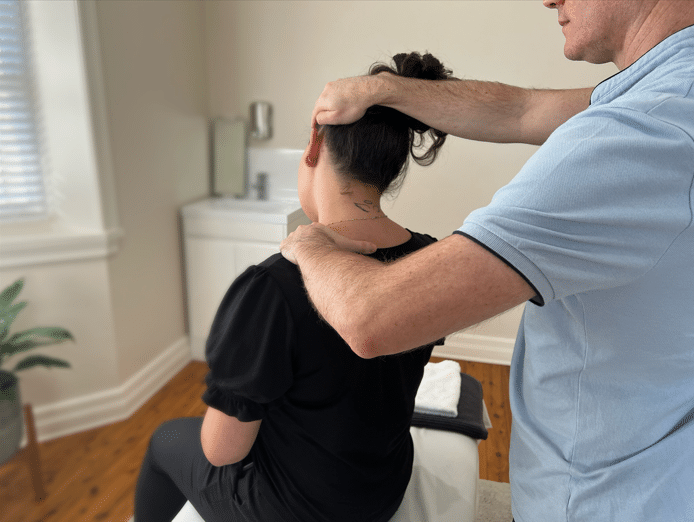- 02 9712 1736
- [email protected]
- 212 Great North Road, Five Dock, NSW 2046
- Open 7 days a week
Walking is one of the most underrated forms of physical activity. Many people overlook this simple exercise in favour of more intense workouts. Research shows that walking offers numerous health benefits for people of all ages. Just 30 minutes of walking each day can transform your physical and mental health. Walking requires no special equipment and can be done virtually anywhere by anyone. It’s time to discover why walking deserves a central place in your daily routine.
Walking is a powerful yet underrated form of exercise with impressive research-backed benefits. Just 30 minutes daily strengthens your heart, reducing cardiovascular risk by 30% and lowering blood pressure. Walking burns approximately 200 calories per session and Harvard research shows it can cut obesity-promoting genes in half. For bone health, walking five to six miles weekly prevents arthritis and reduces hip fracture risk by 40% in postmenopausal women. Walking activates core muscles naturally and improves mental health by releasing mood-enhancing endorphins. Studies show it reduces depression symptoms significantly with an effect size of -0.67. Walking 8,200 steps daily prevents multiple chronic conditions including sleep apnea, GERD, depression, diabetes, and hypertension. Regular walkers in their fifties are 35% less likely to die over the next eight years. The research is clear: walking represents one of the most accessible and effective paths to better health.
Walking offers remarkable benefits for your brain and emotional well-being. Walking releases natural painkilling endorphins that improve mood significantly. A California State University study showed direct correlation results. More daily steps are directly related to better overall mood states. Multiple studies show walking reduces depression symptoms effectively. Meta-analysis revealed a significant reduction in depression assessment scores. The effect size of -0.67 represents a substantial clinical improvement.
Even brief 10-minute walks produce noticeable mental health benefits. These short walks lower anxiety and depression while increasing focus. Walking in nature provides even stronger mental health effects. A 60-minute walk in nature decreases activity in stress-processing brain regions. This natural effect provides more significant benefits than walking in urban environments. Walking effectively reduces cortisol, the body’s primary stress hormone.
Regular walking helps preserve cognitive function as you age. The New England Journal of Medicine published a groundbreaking study. Older adults who walked regularly showed better memory and thinking skills. Regular walking promotes multiple positive mental health outcomes simultaneously, such as improved self-esteem, better cognitive functioning, and enhanced quality of life. These include improved self-esteem, better cognitive functioning, and enhanced quality of life. People who walk regularly demonstrate better problem-solving abilities overall.
Walking strengthens your heart and improves your overall cardiovascular function. Studies show people who meet physical activity guidelines through walking have impressive results. These individuals experience a 30 percent lower risk of cardiovascular events like heart attacks. Your heart becomes more efficient with each step you take during walks. Blood circulation improves throughout your body when you walk consistently.
The American Heart Association recommends walking for good reason. Research shows walking reduces systolic blood pressure by 3.72 mm Hg. Diastolic blood pressure decreases by 3.14 mm Hg in regular walkers. For every 1,000 daily steps, systolic blood pressure lowers by 0.45 points. Walking reduces resting heart rate by an average of 2.88 beats per minute. Postmenopausal women experience even more significant benefits from regular walking. Walking just two to three kilometres daily lowers their blood pressure significantly. These women saw an impressive 11-point reduction in just 24 weeks.

Walking plays a crucial role in weight management and metabolic health. Harvard researchers found fascinating results about walking and weight. Brisk walking for about an hour daily cuts obesity-promoting genes in half. Walking burns calories and helps maintain a healthy weight over time. A brisk 30-minute walk burns approximately 200 calories.
Walking helps curb sweet tooth cravings in surprising ways. Studies show a 15-minute walk reduces chocolate cravings significantly. Walking helps decrease the intake of sugary snacks during stressful situations. Walking after meals helps your body process glucose more effectively. Just two minutes of walking after eating can lower blood sugar levels. This simple habit proves especially beneficial for diabetes management. Walking significantly decreases glycated haemoglobin (A1c) levels in diabetic patients, leading to improved glucose control. Walking 8,200 steps daily effectively reduces obesity risk over time, leading to sustainable weight management

Walking provides excellent low-impact exercise for strengthening your musculoskeletal system. Each step activates multiple muscle groups throughout your lower body. Your quadriceps, hamstrings, calves, and glutes all engage during walking. Regular walking helps maintain bone density and prevents bone loss.
Several studies confirm walking reduces arthritis-related pain effectively. Walking protects joints, especially knees and hips susceptible to osteoarthritis. This protection comes from lubricating joints and strengthening surrounding muscles. Walking five to six miles weekly provides significant joint benefits. This amount of walking can manage existing arthritis and prevent new formation. For post-menopausal women, walking delivers even more protection. Thirty minutes of daily walking reduced hip fracture risk by 40%. Walking stops bone mass loss for those with osteoporosis.
Walking interventions have measurable impacts on physical fitness levels. Studies show walking significantly increases VO₂ max by 2.66 mL/kg/min. This measurement indicates improved aerobic fitness and cardiovascular efficiency. Regular walking increases your range of motion in joints naturally. This practice shifts pressure from joints to muscles for better movement. Research published in the American Journal of Preventive Medicine found promising results. Adults over 49 with lower-body joint pain saw disability prevention. Those who walked for an hour weekly maintained better mobility.
Walking engages your core muscles more effectively than many people realise. Your abdominal muscles continuously work during a proper walking technique. The Journal of Physical Therapy published revealing research. Walking with proper posture activates deep core muscles with each step.
Your transverse abdominis, a crucial stabilising muscle, works constantly while walking. This muscle engagement helps improve overall core strength and stability. Walking naturally creates a rotational movement through your torso. This rotation activates oblique muscles and improves functional core strength.
The natural arm swing during walking further enhances core activation. Research from the University of Michigan confirmed this connection. Walking properly engages more core muscles than many common “ab exercises.” The sustained nature of walking provides excellent endurance training for core muscles.

Your immune system benefits tremendously from the simple act of walking. Walking increases white blood cell circulation throughout your body. These cells help your body fight off infections and disease. A study in the British Journal of Sports Medicine found interesting results. Participants who walked regularly had fewer sick days annually.
Walking helps flush bacteria from your lungs and airways. This flushing effect reduces your risk of developing respiratory infections. The moderate exercise provided by walking optimises immune function without stress. Walking in natural settings exposes you to beneficial environmental microbes.

Quality sleep plays a vital role in overall health and well-being. Walking contributes significantly to better sleep patterns and quality. Studies found women aged 50-75 who walk experience fewer sleep problems. These women who took one-hour morning walks had less insomnia. Walking helps regulate your circadian rhythm and natural sleep-wake cycles.
Physical activity naturally boosts the effects of melatonin, your sleep hormone. Research shows postmenopausal women benefit from light walking habits. These women who engage in moderate-intensity walking sleep better overall. Daily walking significantly improves both sleep quality and duration measurements. Walking reduces pain and stress, two common causes of sleep disturbances.
Morning walks particularly help establish healthy sleep patterns for many people. The consistency of regular walking helps create better sleep hygiene overall.
Regular walking significantly decreases your risk of developing many chronic conditions. A 2022 study in Nature Medicine revealed impressive prevention results. Walking 8,200 steps daily reduces the risk of multiple chronic conditions. These include sleep apnea, GERD, depression, diabetes, and hypertension. The American Diabetes Association officially recommends walking for health. They endorse walking to lower blood sugar and reduce diabetes risk.
Walking at a brisk pace provides stronger protection against disease. Research shows brisk walking reduced cardiovascular mortality by 24%. This significant reduction compares to walking at a slower pace. Regular walking also reduces total cholesterol by 0.11 mmol/L. Comparing the highest versus the lowest walking categories reveals substantial benefits. Those who walk the most have a 31% reduced cardiovascular disease risk. An increase of approximately 30 minutes walking five days weekly helps. This amount reduced coronary heart disease risk by 19%.
Women who walked seven or more hours weekly saw cancer benefits. These women had 14% lower breast cancer risk than less active women. This protection existed even for women with breast cancer risk factors. Regular walking reduces stroke risk by an impressive 20%. This protection increases to 40% when walking at a faster pace. For older adults, every additional 500 daily steps matter significantly. This slight increase is associated with a 14% lower cardiovascular event risk.
Making walking a regular part of your routine doesn’t require dramatic changes. Research shows even modest amounts create significant benefits. Walking for just 10 minutes daily—about an hour weekly—provides protection. This small amount helps stave off disability and arthritis pain. Start with short walks and gradually increase your duration over time.

Aim for specific step counts to maximise your health benefits. Research supports 10,000 steps daily as an optimal health target. This amount effectively reduces risks of multiple chronic conditions. For those just beginning, setting smaller milestone goals works effectively. Every additional 500 steps daily reduce cardiovascular risk by 14%.
Park farther from entrances to naturally add more steps. Take the stairs instead of elevators whenever possible. Schedule walking meetings instead of sitting in conference rooms all day. Use your lunch break for a quick walk around your workplace. Find a walking buddy to help maintain motivation and consistency. Track your steps with a pedometer or smartphone app.
Walking first thing in the morning establishes a positive pattern. Studies confirm morning walks improve sleep quality that night. Walking after meals provides blood sugar management benefits. Just two minutes after eating helps lower blood sugar effectively. Weekend walks in nature combine exercise with enhanced stress reduction.

The evidence supporting walking as an excellent exercise continues to grow. Scientific research confirms benefits for both body and mind. Walking represents one of the most accessible forms of physical activity. People of nearly all fitness levels can begin a walking programme today.
The key to success in walking lies in consistency rather than intensity, ensuring long-term health benefits. Regular walking significantly improves quality of life measurements. Walking is associated with substantial improvements in physical functioning scores, such as increased mobility and strength. These improvements directly translate to better daily life experiences. Walking offers impressive longevity benefits worth considering. People who exercise regularly in their fifties see remarkable results. These individuals are 35% less likely to die over eight years. For those with underlying health conditions, the benefit increases to 45%.
Walking exerts powerful anti-ageing effects on your entire body. These effects mirror lifestyles in Blue Zones around the world. These regions contain the highest concentration of centenarians globally. Walking interventions can significantly enhance your physical capabilities, improving overall fitness and well-being. Studies show participants increased their 6-minute walk distance considerably. This improvement of nearly 80 metres indicates better functional capacity.
Meeting physical activity guidelines through walking brings lifelong benefits. The recommended amount equals 30 minutes daily for five days weekly. This modest commitment can transform your health outcomes completely. Your body and mind will thank you for making walking a priority. Remember that every journey begins with a single step. The path to better health might be right outside your door. Take that first step today towards better health through the power of walking.

Forest Lodge, Annandale, Glebe, Leichhardt, Balmain, Haberfield, Canada Bay, Rozelle, Rodd Point, Wareemba, Stanmore, Petersham, Lilyfield, Hunters Hill, Enfield, Cabarita, Mortlake, Rhodes, Burwood Heights, Birchgrove, Gladesville, Huntleys Point, Abbotsford, Ashfield, Croydon Park, Croydon, Chiswick, Russell Lea, Burwood, Strathfield, Concord, Drummoyne, North Strathfield, Liberty Grove, Dulwich Hill, Lewisham, Camperdown, Ashbury, Homebush, Homebush West, Woolwich, Henley, Summer Hill, Sydney Olympic Park

About
Five Dock Osteopathic & Chiropractic is located in Canada Bay, in Sydney’s Inner West. Servicing suburbs including Burwood, Croydon, Drummoyne, Five Dock, Haberfield, Concord, Abbotsford, Chiswick, Leichhardt, Wareemba, Russell Lea, Summer Hill, Strathfield.
Clinic hours
Monday, Tuesday, Thursday 7AM – 7PM
Wednesday, Friday 7AM – 6PM
Saturday 7AM – 2PM
Sunday 8AM – 2PM
Contact details